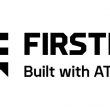Cisco rethinks municipal Wi-Fi
Shortcomings in the economics and performance of many municipal 802.11 systems have been chronicled at length in recent months, but networking giant Cisco Systems believes there is a valuable place for municipal Wi-Fi if the business model is changed.
“The problem is not the technology,” said Morgan Wright, Cisco’s global industry solution manager for public safety and homeland security.
Cities will have to discard the notion that a service provider will build a Wi-Fi system at no cost to the city, Wright said. Instead, the new Cisco Mobile Government solution is focused on making the government the primary investor in a network that delivers reliable, secure data to public-safety and government personnel.
“We believe the way they looked at the traditional model before — it was a free, advertising-supported, cookie-cutter approach — basically wasn’t reliable enough or ruggedized enough for public-safety use or government use,” Wright said. “We kind of turned that around and said, ‘We think the new model should be one that is focused on the delivery of government services and applications and focused on the mobile worker.’”
The Cisco solution includes government-level security and power backup to its new 1520 series wireless broadband platform, said Joel Vincent, Cisco’s senior manager of outdoor wireless systems. Currently, Cisco is shipping a two-radio version of the gear, but a four-radio version will ship in January that will enable access at 2.4 GHz, 4.9 GHz and 5.8 GHz, with an open slot that can be deployed with a radio for another band, such as 700 MHz, he said.
Cisco’s 3200 series of wireless and mobile routers include features such as a 5 GHz card for radio interoperability, high-speed roaming capability and video security.
For example, public-safety agencies could build a video server into a 3200 router, connect it to a digital video recorder and convert video from connected cameras to a digital signal, Vincent said. “You can store it in-car on a DVR and pull up to a hot spot and upload your video digitally to a centralized database at headquarters. It takes a very manual video process and chain of evidence and digitizes it,” he added.
The Cisco Mobile Government solution marks the company’s most aggressive push into the municipal and public-safety markets to date, Wright said. External resources include Cisco’s partners, from companies like 3I Infotec and Advanced Public Safety that enhance the management and analysis of video to companies like Raytheon JPS, which long has been a stalwart in public-safety interoperability.
Raytheon JPS has agreed with Cisco to market a joint solution to let public-safety organizations leverage the combined features of the Raytheon JPS ACU-2000 IP gateway and Cisco’s IPICS communications solution.
With the joint solution, personnel on an IP network — even those with only a voice-over-IP (VoIP) phone and a laptop — can have voice communications with first responders using LMR radios. Some public-safety officials have been wary of IP-based solutions, but the reputations of companies like Cisco and Raytheon JPS should help allay those concerns, said Roman Kaluta, director of interoperability solutions for JPS.
“There are many agencies that are starting to see the movement toward convergence of LMR and IP. Certainly they have been asking for it, [but] they are cautious about it,” Kaluta said. “With two industry leaders — one on the network side and one on the LMR side — bringing a solution forward gives it a lot of stability and a lot of faith on their part that it will meet their mission-critical needs.”
In addition, LMR manufacturer EFJohnson announced a partnership with Cisco that allows IPICS to link with EFJohnson’s all-IP LMR systems and radios, said Ed Kelly, vice president of product and business development for EFJohnson. The combined solution will offer a graceful migration path from legacy LMR systems to IP-based P25 systems, he said.
“What we’re telling customers — and it’s the same thing Cisco is telling customers — is, ‘We know you have a lot of legacy equipment out there and you don’t want to forklift that, and there’s issues with interoperability between legacy equipment. Let me bridge that together for you and let me migrate you to Project 25 in a way that’s on your timeframe and within your budget,’” Kelly said.
















